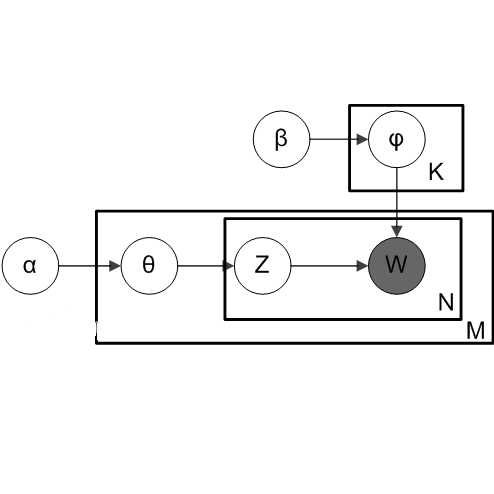Linear discriminant analysis (LDA) is a fundamental method for feature extraction and dimensionality reduction. Despite having many variants, classical LDA has its own importance, as it is a keystone in human knowledge about statistical pattern recognition. For a dataset containing C clusters, the classical solution to LDA extracts at most C-1 features. Here, we introduce a novel solution to classical LDA, called LDA++, that yields C features, each interpretable as measuring similarity to one cluster. This novel solution bridges dimensionality reduction and multiclass classification. Specifically, we prove that, for homoscedastic Gaussian data and under some mild conditions, the optimal weights of a linear multiclass classifier also make an optimal solution to LDA. In addition, we show that LDA++ reveals some important new facts about LDA that remarkably changes our understanding of classical multiclass LDA after 75 years of its introduction. We provide a complete numerical solution for LDA++ for the cases 1) when the scatter matrices can be constructed explicitly, 2) when constructing the scatter matrices is infeasible, and 3) the kernel extension.
翻译:线性线性分析(LDA)是地貌提取和维度减少的基本方法。 尽管具有许多变量, 古典LDA具有其自身的重要性, 因为它是人类统计模式识别知识的基石。 对于包含 C 类集的数据集, LDA 抽取的经典办法, 大部分 C-1 特征。 在这里, 我们为古典LDA 引入了一个叫做 LDA++ 的新颖的解决方案, 产生C 特征, 每一个都可被解释为测量一个组的相似性。 这种新颖的解决方案桥的维度减少和多级分类。 具体地说, 我们证明, 对于同质高斯数据, 在一些温和条件下, 线性多级分类分类的最佳权重也给 LDA 提供了最佳的解决方案。 此外, 我们显示, LDA++ 揭示了一些重要的新事实, 显著地改变了我们对古典多级LDA 的理解。 我们为以下案例提供了完整的数字性解决方案:(1) 当可以明确构建散状矩阵时, 2 当构建散状矩阵时, 当构建成散状矩阵时, 时, 2 是不可操作, 3 。




